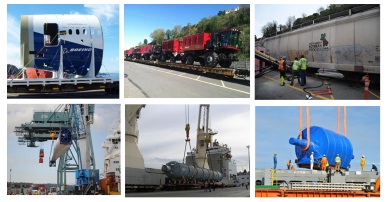Port/Rail Interface: Everett
![]() Print this Article | Send to Colleague
Print this Article | Send to Colleague
Port of Everett Starts Construction on New Rail Line
Construction begins this month on a 3,300-lineal-foot double rail siding to support international cargo movement at the Port of Everett.
In February, the port commission awarded a $3.4 million contract to local contractor to complete the second phase of terminal rail enhancements to improve regional rail freight mobility and increase capacity of rail freight at the seaport. This project was made possible, in part, by a federal TIGER grant.
Slated for completion in November, the project will increase the port’s on-terminal rail footprint from 9,200 to 12,500 lineal feet. It also will provide a connection that allows BNSF easier ingress and egress to the port's shipping facilities, reducing congestion on the mainline from Seattle to Canada and east along the northern corridor.
The port utilizes rail to for the movement of both exports and imports, including the aerospace, construction, manufacturing, energy, agricultural and forest products. According to the port, transporting cargo by rail "could eliminate at least 429 million commercial truck miles from local roads and highways." Additionally, this project will retain and help grow the port’s 13,614 direct trade-related jobs and provide approximately 70 construction jobs.

Rail plays a key role in moving cargo in and out of the Port of Everett.
Photo/Port of Everett
Construction begins this month on a 3,300-lineal-foot double rail siding to support international cargo movement at the Port of Everett.
In February, the port commission awarded a $3.4 million contract to local contractor to complete the second phase of terminal rail enhancements to improve regional rail freight mobility and increase capacity of rail freight at the seaport. This project was made possible, in part, by a federal TIGER grant.
Slated for completion in November, the project will increase the port’s on-terminal rail footprint from 9,200 to 12,500 lineal feet. It also will provide a connection that allows BNSF easier ingress and egress to the port's shipping facilities, reducing congestion on the mainline from Seattle to Canada and east along the northern corridor.
The port utilizes rail to for the movement of both exports and imports, including the aerospace, construction, manufacturing, energy, agricultural and forest products. According to the port, transporting cargo by rail "could eliminate at least 429 million commercial truck miles from local roads and highways." Additionally, this project will retain and help grow the port’s 13,614 direct trade-related jobs and provide approximately 70 construction jobs.

Rail plays a key role in moving cargo in and out of the Port of Everett.
Photo/Port of Everett

